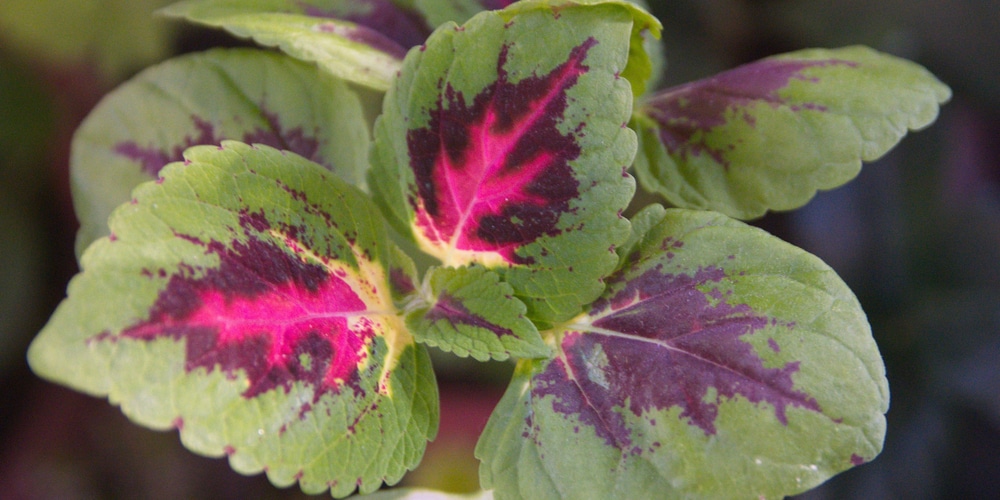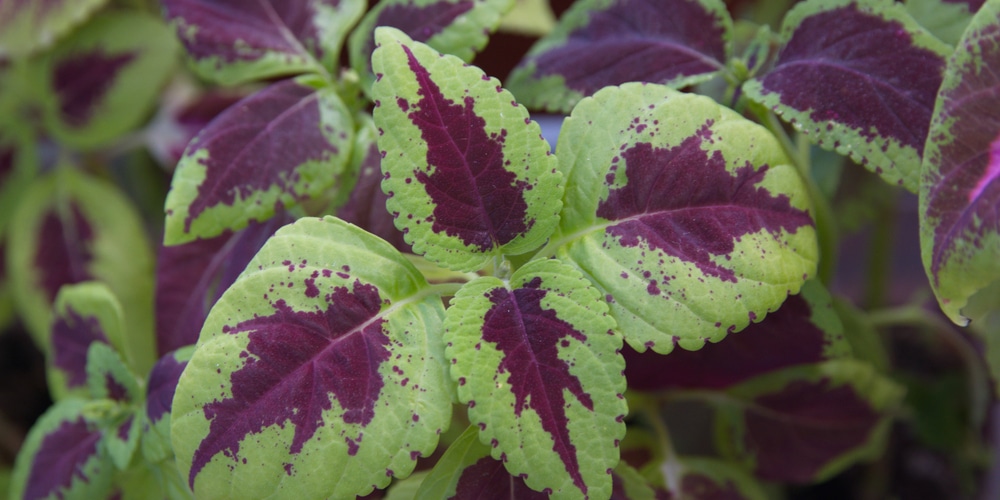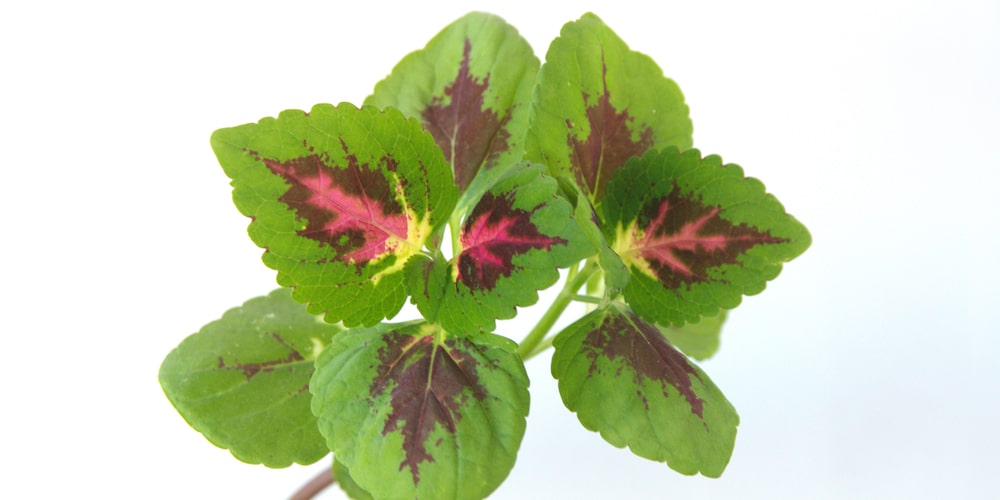Alligator Alley Coleus is a stunning tropical plant with lush and attractive foliage. Its deep mahogany leaves, with a stripe of bright pink in the center, can make any corner of your house more lively. Part of the Coleus family, these plants also produce tiny blue and purple flowers.
Generally, these plants perform well in containers (as hedges or borders). They are highly decorative and can make your landscape more elegant. Additionally, you can add them to window boxes or even in hanging baskets to further increase the looks of your property.

Because of their natural habitat, Alligator Alley Coleus prefer warmer zones. You can grow this plant outdoor as a perennial in hardiness zones between 10 and 11. You won’t have such good luck if you live in a northern region. However, you can still grow your plant as an annual (or move it inside your home when temperatures get below 55F).
Only keep in mind that these plants are not tolerant to frost. But don’t worry: under optimal conditions, this plant is sturdy and versatile. Indeed, coleus plants tend not to be too fussy. But you will have to meet their basic requirements to have them thrive.
If you are interested to learn more about this unique-looking plant, you’ve landed in the right place. Here, you’ll learn all you need to know about growing Alligator Alley Coleus in your garden.
Alligator Alley Coleus Care: Our Tips
We mentioned how Coleus plants love warmth. If you live in the north, do not plant it outdoors before the temperatures rise about 60F. Also, remember to add them to rich, loose, and well-drained soil. You can recreate optimal conditions by adding perlite to a regular potting mix.
For even better results, consider adding mulch around your plant: doing so will increase water retention, improve the nutrient content of the ground, and regulate the temperatures around your coleus. Adding organic material like compost or manure will also help enrich the soil’s nutrient content.
Soil
While coleus plants are not too picky about soil pH, slightly acidic to neutral conditions will give you the best results. Also, the pot where you plant your coleus should have range holes: these plants like moisture but don’t do well in wet environments.
Watering
While your coleus will tolerate short periods of drought, going without water for too long will cause browning leaves and slow down its growth. As a rule of thumb, you should let the soil dry between watering and only add more water when the top two inches feel in need of moisture.
Sunlight
Don’t forget that these plants prefer partial to full shade. Avoid placing them under the bright, direct sun to get the attractive colors Alligator Alley Coleus can give you. Too much lighting can cause sunburn and faded foliage coloration. If you live in a warm region, place them where they will receive filtered morning sun and protect them from the hot afternoon light.
During the hottest months of the year, you may have to increase the watering frequency twice a day. Also, depending on how rich your soil is, you may have to feed your coleus. Add a slow-balanced fertilizer during spring and summer to boost your plant’s growth. However, keep in mind that you’ll get better colors if you avoid using too many chemicals: instead, choose a proper location for your plant (with adequate lighting) and keep up the watering.
Flowers
The blue and purple flowers Alligator Alley Coleus produce might not be the best part of the plant. Plus, it is best to pinch them as soon as they appear to ensure your plant focuses its energy on growing lush and attractive. The idea is to have your plant produce leaves rather than flowers and seeds. Plus, unchecked blooming can cause your plant to decline.
Propagation
If you live in a colder region, your plant will probably not survive the winter. However, you can always take some cuttings to propagate it before the temperatures lower. Luckily, the process is simple and effective. Take four to six-inches long stems and (after dipping the end in rooting hormone) place them in potting mix. Cover your plants with a plastic bag to keep the temperature optimal.
Alligator Alley Coleus: Conclusion
Finally, consider turning your plant to keep it in shape. Without pruning, coleus tends to get leggy and lose density.

